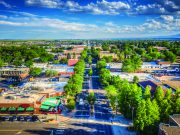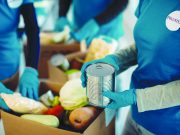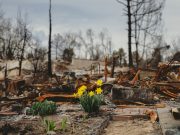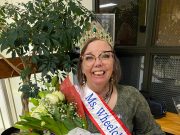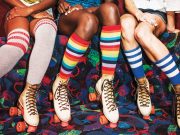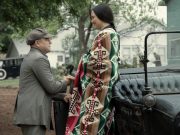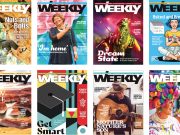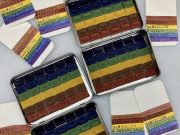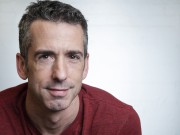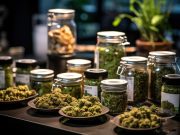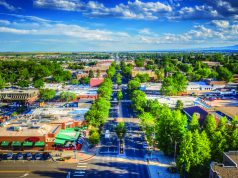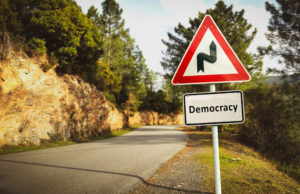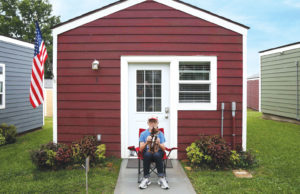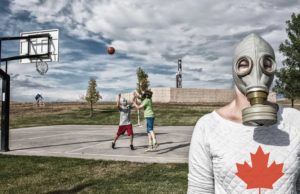
Twenty-five years ago, a group of retired teachers decided to do something about the racial discrimination and bullying they saw in their classrooms. So they founded Reading to End Racism (RER), a program that sends volunteers into schools to share stories and lead conversations about the importance of diversity, inclusion, kindness and active intervention.
YWCA Boulder County first supported RER by providing office space. In 2013, the program was formally adopted, and volunteers began reading books and holding discussions with elementary school students throughout Boulder Valley School District (BVSD).
“It aligned with our mission,” says YWCA’s Director of Community Engagement and Equity Shiquita Yarbrough. The organization’s mission is twofold: Empower women and end racism.
“Those stories are very important because kids relate to them,” Yarbrough says. “When they can relate, they’ll listen.”
In the 10 years since RER was implemented locally, more than 29,000 BVSD students have participated. To mark the anniversary, YWCA is hosting program founder Daniel Escalante at the Boulder Public Library (event details below).
Boulder Weekly asked Yarbrough 10 questions about books, beliefs and having hard conversations.
The following has been lightly edited for clarity and length.
1.) How do you pick the books?
It’s volunteer-driven. Sometimes it depends on timing. If it’s Indigenous People’s Month or AAPI (Asian American and Pacific Islander Heritage) Month, we try to lift that up, celebrate those diversities.
A lot of times it depends on what the theme is in the classroom at the moment: if they’re learning about Chinese culture or Japanese internment. Volunteers bring out books they feel are impactful and they can relate to themselves — and also what teachers may request.
We talk about the characters in the book and the key lessons. A lot of times, it’s the Golden Rule or how to be kind, why bullying is bad, how to be more inclusive, how to appreciate and celebrate diversity. Sometimes we do activities.
Kids see the disparities, discrimination, prejudice. They’re like, ‘That’s not right, we’re gonna do better.’
2.) How have the books you’re reading changed over the years?
We are getting more authors of color, illustrators of color. Within the last five years, especially since [the murder of] George Floyd, our literature has become more intentional and anti-racist.
I also believe people are seeking more education and resources; people are more aware and being more intentional so that we can have a better society and world for our kids.
3.) What understanding do children have of issues like race?
The younger they are, they understand there’s diversity in the classroom. If they get a student who doesn’t look like them, who dresses differently, who may have an accent — those kids understand the difference in skin color.
The older they get, they can understand the difference in how they’re being treated. Being out on the playground and all kids play together but then one student of color never gets invited to play, never gets chosen. Or in the lunchroom. A lot of times, students will tell me those things.
We ask them, ‘When you see that happen, does that seem right?’ and they’ll say no. We ask, ‘Can it be changed?’ and they’ll say yes, and we say, ‘You all have power, how can you use your power to change that?’ They start giving examples: ‘Invite that person to play with you or eat lunch next to you.’
It’s opening up that idea of possibility and power. They’re given permission to do what’s right.
4.) How aware are children of current events, like protests or the Black Lives Matter movement?
It varies according to their age and what’s being shared at home. I don’t think a lot of teachers talk about controversial issues.
We don’t put teachers in those situations. As an outside organization, if a kid wants to talk, we try to hear them out [while keeping the conversation focused on] how we appreciate others’ experiences whether we agree with it or not.
5.) Nationally, we’ve seen a lot of pressure on schools to moderate what they teach and say about LGBTQ issues, racial issues and even American history. Has the YWCA felt any of that?
I haven’t heard from any schools that said a parent didn’t want their kid to be exposed to Reading to End Racism. We are supported quite a bit by BVSD and the principals at the schools.
At one point, when CRT, (Critical Race Theory) was a trigger word, and people for some reason thought CRT was being taught in elementary schools — those who are in education know that’s not true, but people automatically thought there was a possibility we were talking about CRT to second graders. That’s, of course, not true.
Sometimes parents want to see the list of books that we read. We ask volunteers to share what books they are reading, and teachers can send them out to the parents. We’re being 100% transparent. If you feel this is not what you want your kids to learn, you can keep them at home.
I would invite parents who are concerned to come to a training. If someone has questions, they can contact me and we can talk about it.
6.) For parents who are unsure how to discuss these topics with their children, what do you recommend?
We don’t do what we’re afraid of. We’re gonna make mistakes, but starting those conversations is truly important, and they should always start at home. Parents should teach their kids what they want to know.
You don’t know what your kid is thinking or if they’re being bullied. Maybe someone is being derogatory, and they don’t know how to respond. If you don’t hold those conversations, someone might teach them an inappropriate way to respond.
We expanded our program due to parents saying, ‘I don’t know how to do this.’ We have a training called How to Talk to Your Kids about Race, so we provide some tools for how to continue conversations when kids ask questions.
Parents have to provide opportunities for vulnerability and a listening space for kids to be able to utilize their power, which is their voice, without cutting them off and telling them they should think that way or not think that way.
People want to get it right, but you only get it right by getting it wrong first. That’s progress.
7.) So you’ve done work with parents and kids. Who is better at approaching these issues?
I think parents learn from kids more than they teach kids. The kids are holding parents accountable.
Kids are very curious and inquisitive. When you read true stories [about things] like the Tulsa Massacre, they ask really good questions. ‘Why would they burn the whole town down? Why do people stand around and not say anything?’ They see things for what it is, as it is.
The kids give me hope, to be honest. They give me hope for the future because they recognize that we are a human race and we should treat people the way we want to be treated.
8.) How do you measure success or progress?
It’s really tricky. We only go into classrooms once a year. When we go back next year, [the students are] in a totally different class, different grade, maybe even totally different school. And so it’s really hard for us to measure. If we could be in the schools on a more consistent basis, even once a quarter, it would be more impactful.
We have evaluations, and we ask the kids if they learned something new or different, if they know how to be an ally. Students of color open up and say things that teachers didn’t know were going on in the classroom or that students felt that way.
You would not believe how many times I go into these classrooms and teachers say, ‘I’ve been waiting all year for you to come.’ I’ve had teachers in tears before. When you have teachers waiting for you to come back, that says something.
In BVSD, we don’t have very many teachers of color. If you have teachers that feel isolated, how do you think the kids feel?
9.) What are you reading right now?
I just bought Walk through Fire by Sheila Johnson.
I am intrigued by people who go through a life of hard knocks. Those types of books inspire me to keep going.
My work can be very heavy. Sometimes I think I’ll be dead and gone before I can see the fruit of my labor and all labor. We still don’t have housing for all, equal opportunity for all — all those things Martin Luther King, Jr. fought for. Yes we’ve come a long way, but we have so far to go.
10.) What’s the best way for our readers to support this program?
Of course, donating money to the program, because it’s the least-funded program we have at the YWCA. Also more volunteers. I go into the schools, and I may have to read in five classrooms because we don’t have enough volunteers.
We’re there all day, first to last, in every classroom, to read. My dream would be to have Reading to End Racism in all the schools in BVSD. I’d love it to be in St. Vrain [Valley School District] too.
I wish more parents and more schools would sign up for How to Talk to Your Kids about Race. Having these conversations is truly important, and they do make a difference in their kids’ lives and in the community as well.
If you go: Reading to End Racism 10-year Anniversary. 4-6 p.m. Monday, Nov. 27, Boulder Public Library’s Canyon Theater, 1001 Arapahoe Ave., Boulder. Free. Registration required: bit.ly/RTER-YWCA
Recommended Reading
The YWCA’s top picks for teaching children (and ourselves) about diversity and inclusion.
For kids
- Strictly No Elephants by Lisa Mantchev and Taeeun Yoo
- I Am Golden by Eva Chen and Sophie Diao
- The Sandwich Swap by Her Majesty Queen Rania Al Abdullah and Kelly DiPucchio
- Fry Bread by Kevin Noble Maillard
- Our Skin by Megan Madison, Jessica Ralli and Isabel Roxas
- Hear my Voice/Escucha mi Voz by Warren Binford
- One Green Apple by Eve Bunting and Ted Lewin
For adults
- Who We Be by Jeff Chang
- An Indigenous Peoples’ History of the United States by Roxanne Dunbar-Ortiz
- Between the World and Me by Ta-Nehisi Coates
Why Are All the Black Kids Sitting Together in the Cafeteria? by Beverly Daniel Tatum


